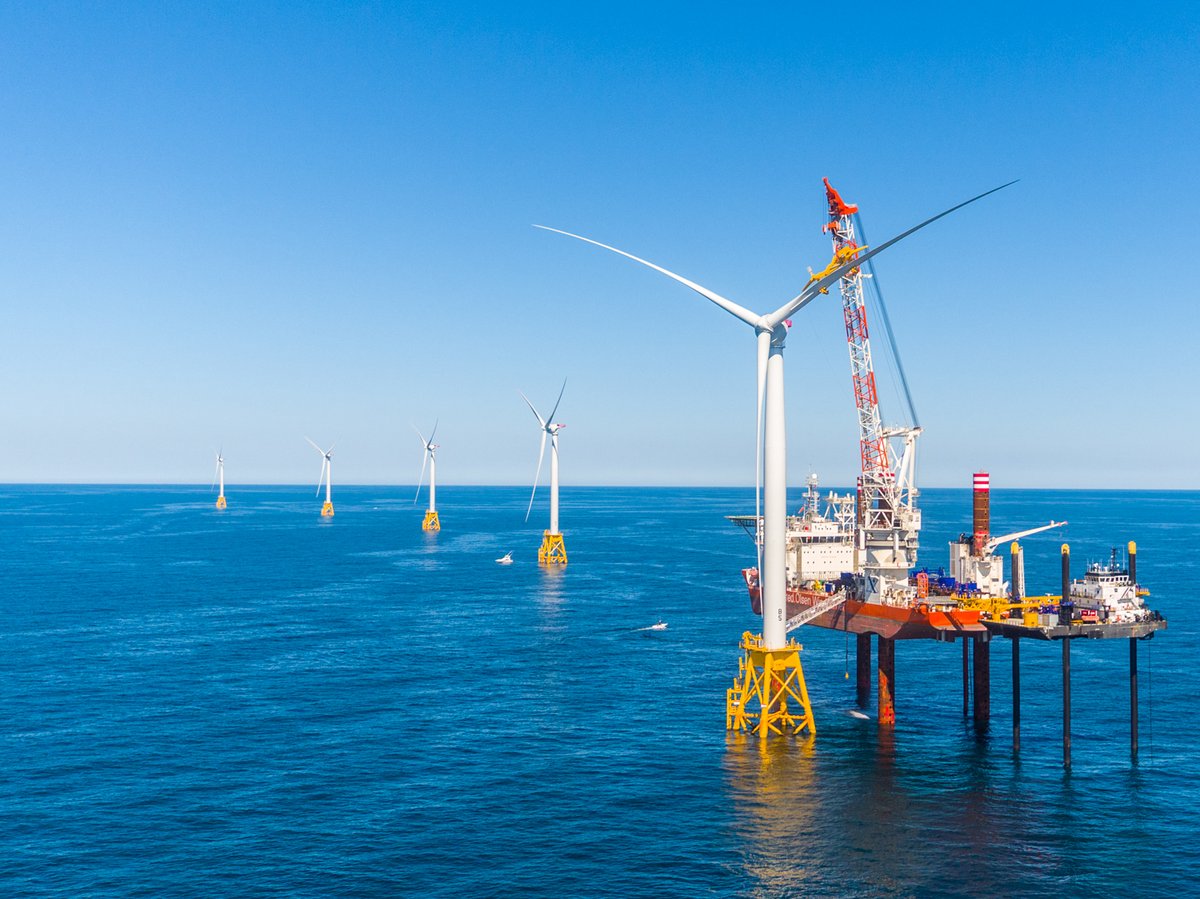Massachusetts and Rhode Island announced they have picked Vineyard Wind and Deepwater Wind to develop 1.2 gigawatts of offshore wind power, projects that could give the industry a strong beachhead in southern New England.
Massachusetts Gov. Charlie Baker named Vineyard Wind, a partnership between European offshore wind developers Avangrid Renewables and Copenhagen Infrastructure Partners (CIP), is the state’s choice to build the first offshore venture, an 800-megawatt array south of Martha’s Vineyard.
Also on Wednesday Rhode Island Gov. Gina Raimondo announced her state is contracted with Deepwater Wind to get 400 MW of power from the company’s planned Revolution Wind project on a lease in federal waters south of the two states.
Officials in both states were under pressure from their commercial fishing industry to take a slower approach on developing the area around Martha’s Vineyard, and allow for years of study with smaller arrays. Those calls for a more cautionary approach have been bolstered by Massachusetts and federal fisheries agencies.
Massachusetts and Rhode Island have vied for years to position themselves as bases for an eventual U.S. offshore wind industry, touting New Bedford, Mass., and North Kingston, R.I., as ideal deepwater ports to build and service turbine arrays.
Rhode Island was first out of the gate when Deepwater built its pilot project, the five-turbine, 30 MW Block Island wind farm in 2016. The new commitments by both states is important because they will likely attract new investment in the nascent industry, said Liz Burdock, executive director of the Business Network for Offshore Wind.
“The economic driver is scale. I don’t think local mandates (for renewable energy) are the way to go,” said Burdock. Investment will flow to the states that have made commitments as the momentum builds for a U.S. industry, she said.
Once companies start setting up – not just the offshore wind developers but secondary suppliers – “you will start seeing them get a foothold, and it will be hard for them to move,” said Burdock.
With the Trump administration’s continuance of the “all of the above” policy toward offshore energy that began in the Obama years, states are again jockeying for a piece of the shoreside industries that could grow from wind development.
New Jersey politicians who had hoped to get the first U.S. pilot project off Atlantic City are again talking up the Delaware River as a homeport for federal wind lease development off their beaches. New York City officials are reactivating the South Brooklyn Marine Terminal with an eye toward hosting wind energy support, with Statoil already planning its Empire Wind project on a 79,350-acre lease tucked between approaches to the harbor.
The federal Bureau of Ocean Energy Management has issued 13 leases off the East Coast to wind companies.
“We have more than 8 gigawatts in policy commitments” to attract more investment, Burdock said. “Eight gigawatts in Europe now support 9,600 jobs.”
It’s impossible to say yet what the timeline would be for building out that many turbines on this side of the Atlantic, she added. In the early stages the existing U.S. offshore construction and support fleet will be able to start the work, but as the industry scales up there will be incentive to build new U.S.-flagged Jones Act vessels.
“When you start talking about 8, 10, 12 gigawatts, you will see a vessel operator build one,” said Burdock. Her group is holding a July workshop in Houston for offshore vessel operators and builders to talk about those future needs.




